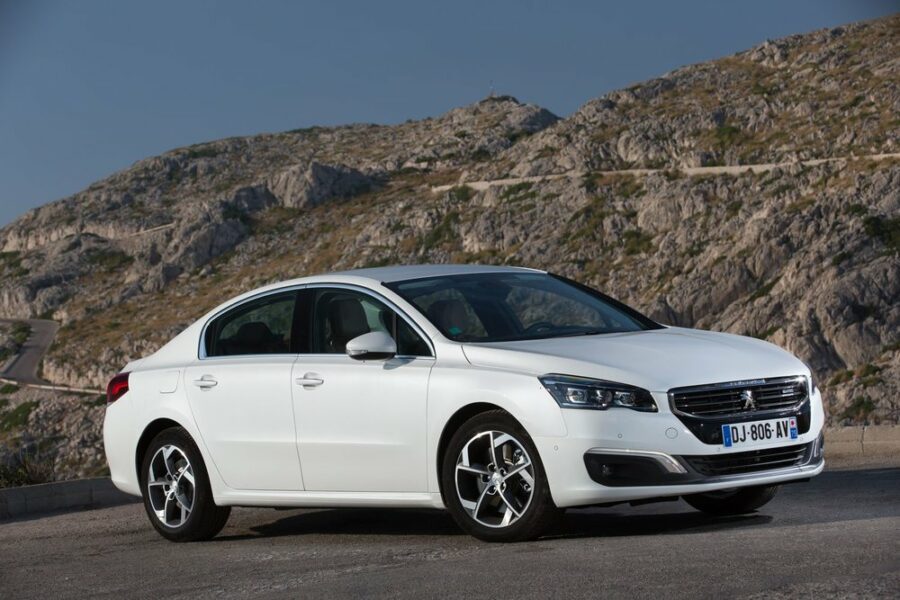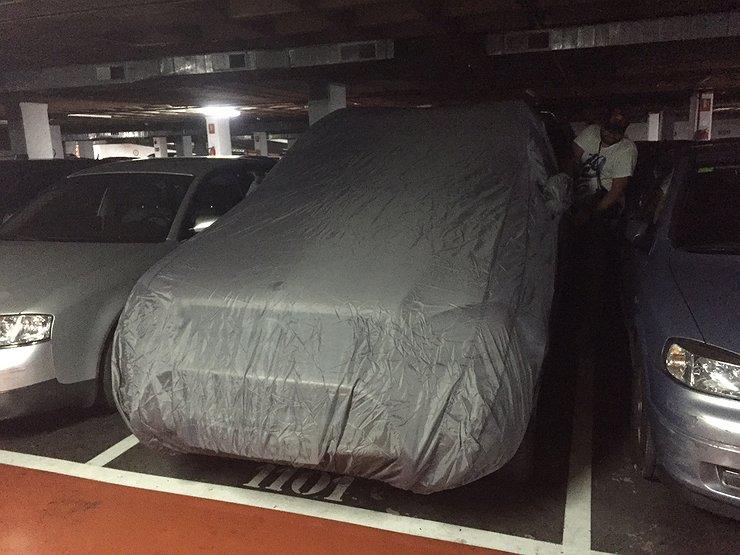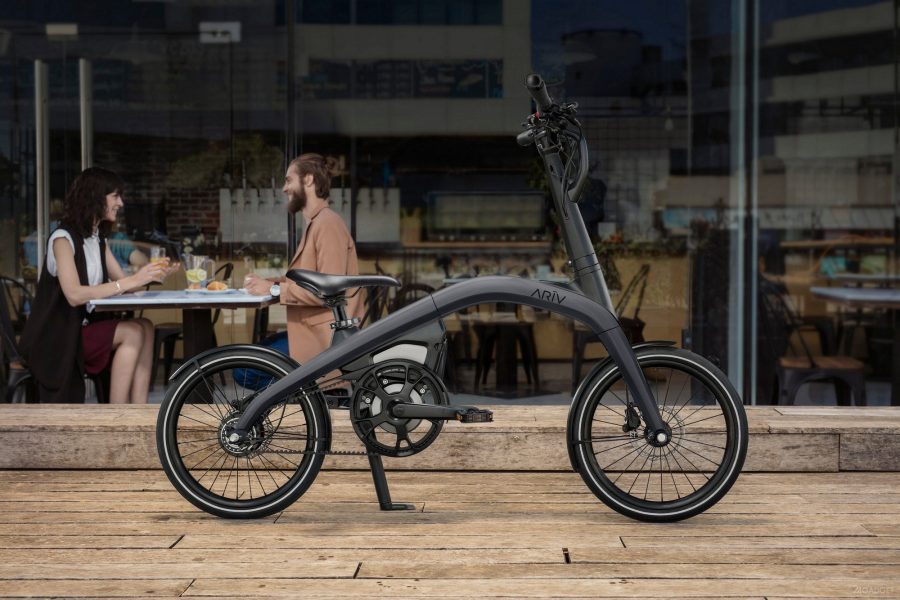
Test: Peugeot 508 2.2 HDi FAP GT
We at Peugeot are already accustomed to this in the lower classes, but the approach is new for cars of this size with a lion on the nose: Peugeot wants to be more prestigious. Of course, they go their own way, but it seems that if they do, they want to be a little like Audi. Which is not bad.
Look at the exterior: the elements are prestigious and emphasize the low height with a considerable width and luxurious length, the front and rear windows are coupe (and distinctly) flat, the hood is long, the rear is short, the bulging curves of the shoulders stand out, emphasizing the hardness, in the end, however, not particularly spared chrome. Only the front overhang is still quite long.
Inside? It seems to be a reflection of the exterior, but it is clearly adapted to the position being held: a lot of black, a lot of chrome or "chrome", and the plastic is mostly pleasant to the touch and therefore of high quality. The rotary knob between the seats, which immediately falls into the hand (especially if the car is equipped with an automatic transmission), serves all possible settings, as is customary today, but in its shape and design, along with the buttons around it, it is very similar to the Audi MMI system. Even if we delve into the details, the conclusion is the same: the 508 wants to create an impression of prestige in the driver's environment.
The projection screen is no longer alien to small Peugeot cars, and here too it works not on the windshield, but on a smaller plastic windshield that slides out of the dash in front of the steering wheel. The case works, only under certain lighting conditions the hole in the instrument panel reflects unpleasantly in the windshield, right there in front of the driver. The test 508 was also well-equipped: leather-covered seats that didn't tire you on long journeys and are well thought out, of course also (mostly electrically) adjustable. The driver can also be pampered by the (otherwise simple) massage function. The air conditioning is not only automatic and divisible, but also separate for the rear, there is also divisible (!) And generally effective, except when the driver forgets to turn off the air circulation - in such cases, automatic air conditioning cannot or does not. does not overgrow with an ear.
Rear passengers are also well taken care of; in addition to the mentioned ability to separately adjust the microclimate, they were given a 12-volt outlet, space for two sidewalks (in the middle armrest), a slightly uncomfortable (to use) mesh on the backs of the seats, sun visors in the side windows and one for the rear window and rather large drawers by the door . And again - which is the exception rather than the rule even for large cars - there are enough luxurious seats to make long journeys stress-free. There is also enough knee room for an adult.
In Test 508, the black color was disturbed by the tastefully matched warm brown leather on the seats. A good choice as lighter skin can look more prestigious, but it is also much more sensitive to the dirt that clothing brings. Wellness was also taken care of by a good audio system, which disappointed us with some (sub) control menus.
The worst part of the five hundred and eight, however, was surrender. Apart from the drawer on the dashboard (which is indeed cooled too), only the drawers in the door are for the driver and front passenger; they are not small, but also unlined. Yes, there is a (smaller) box under the common elbow support, but if you use a USB input there (or a 12-volt outlet, or both), there isn't much room left and it opens towards the passenger. therefore, at the same time it is difficult to reach it, but this box is located quite far back, and it is difficult to reach it even for the driver. Two places were reserved for cans or bottles; both slide out from the center of the dashboard under pressure, but are positioned exactly under the air gap, which means they heat the drink. And if you put bottles there, they strongly obstruct the view of the central screen.
And what about the trunk? The small rear end can't offer a large entry opening, as the 508 is a sedan, not a station wagon. The hole in it is also nothing special either in volume (515 liters) or in shape, since it is far from being square. It's indeed (third) expandable, but that doesn't improve the overall rating much, the only useful thing about it being two bag hooks. There is no special (smaller) box in it.
And we come to a technique in which (test) Five Hundred Eight has no special functions. The handbrake is electrically switched on and pleasantly, imperceptibly throws off when starting off. Automatic switching between low and high beam headlights is also a good gadget, while it should be noted that the system works well for the driver, but not for the oncoming driver - judging by the many (light) warnings of vehicles from the opposite direction. It seems to be too slow. The rain sensor is also nothing new - it (also) often works in the exact opposite of what it should. Surprisingly, the (test) 508 didn't have the warning in case of inadvertent lane departure that the previous generation C5 already had as part of the same problem!
The drivetrain is also a modern classic. The turbo diesel is very good: there is little fuel, the cold warms up quickly before starting, there are (many) vibrations in the cabin, and its performance is somewhat calmed down by the automatic transmission. This one is also very good: it quickly switches between driving modes, switches quickly enough, for this, the levers on the steering wheel are also intended. Even in manual mode, the automatic transmission does not allow the engine to spin above 4.500 rpm, which is actually a good side, as the engine has torque in a higher gear (and at lower rpm) powerful enough to accelerate further.
The whole package, along with front-wheel drive, has no sporting ambitions: whoever drives it into tight corners will quickly feel the old front-wheel drive feature - a raised inner (front) wheel and an idle transition. The long wheelbase is more geared towards longer corners, but the 508 doesn't shine here either, as its directional stability (both in a straight line and in long corners) is rather poor. It's not dangerous, not at all, and it's also unpleasant.
When someone saw him in the dark with poor lighting, he asked: "Is this a Jaguar?" Hey, hey, no, no, who knows, maybe he was seduced by the darkness of the castle, but so quickly and with all (mentioned) prestige, I guess such a thought can really overwhelm. Otherwise, they probably had something similar in mind at Peugeot when they came up with the project that sounds like the 508 today.
text: Vinko Kernc, photo: Aleš Pavletič
Face to face: Tomaž Porekar
The novelty is a kind of successor to two different models, and the emphasis is on something like. I think it's a good follow-up to the previous 407, as Peugeot did what its competitors did - the 508 is bigger and nicer than the 407. It lacks some of the styling cues of its predecessor, especially the sedan. quite pronounced. The good side is definitely the engine, the driver has plenty of power to choose from, but can also opt for moderate gas pressure and consistently low average fuel consumption.
It is a pity that the designers missed the opportunity to add more space to the interior for little things. The front seats, despite the size of the cab, are cramped for the driver. However, the restless chassis and poor handling on the track should still be corrected.

